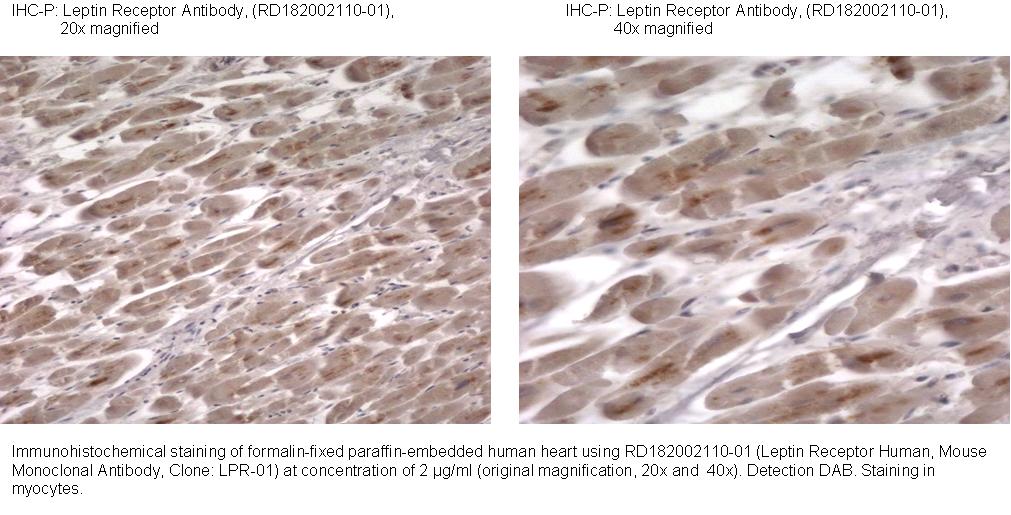Type
Monoclonal Antibody
Applications
Western blotting, ELISA, Immunohistochemistry
Antibodies Applications
Source of Antigen
NSO mouse myeloma cell line
Hosts
Mouse
Isotype
IgG1
Clone
LPR-01
Preparation
The antibody is a mouse monoclonal antibody against recombinant Human Leptin Receptor. The Human Leptin Receptor is a recombinant protein produced in mouse myeloma cell line. DNA sequence including the extracellular domain of Leptin Receptor (amino acid residues 1 839) fused to the Fc region of human IgG (with IIEGR added at the amino terminus and 6 histidine residues added at the carboxy terminus).
Species Reactivity
Human. Does not react with mouse. Not yet tested in other species.
Purification Method
Affinity chromatography on a column with immobilized protein G.
Antibody Content
0.1 mg (determined by BCA method, BSA was used as a standard)
Formulation
The antibody is lyophilized in 0.05 M phosphate buffer, 0.1 M NaCl, pH 7.2.
Reconstitution
Add 0.2 ml of deionized water and let the lyophilized pellet dissolve completely. Slight turbidity may occur after reconstitution, which does not affect activity of the antibody. In this case clarify the solution by centrifugation.
Shipping
At ambient temperature. Upon receipt, store the product at the temperature recommended below.
Storage/Expiration
The lyophilized antibody remains stable and fully active until the expiry date when stored at -20°C. Aliquot the product after reconstitution to avoid repeated freezing/thawing cycles and store frozen at -80°C. Reconstituted antibody can be stored at 4°C for a limited period of time; it does not show decline in activity after one week at 4°C.
Quality Control Test
SDS PAGE - to determine purity of the antibody BCA - to determine quantity of the antibody
Note
This product is for research use only.

